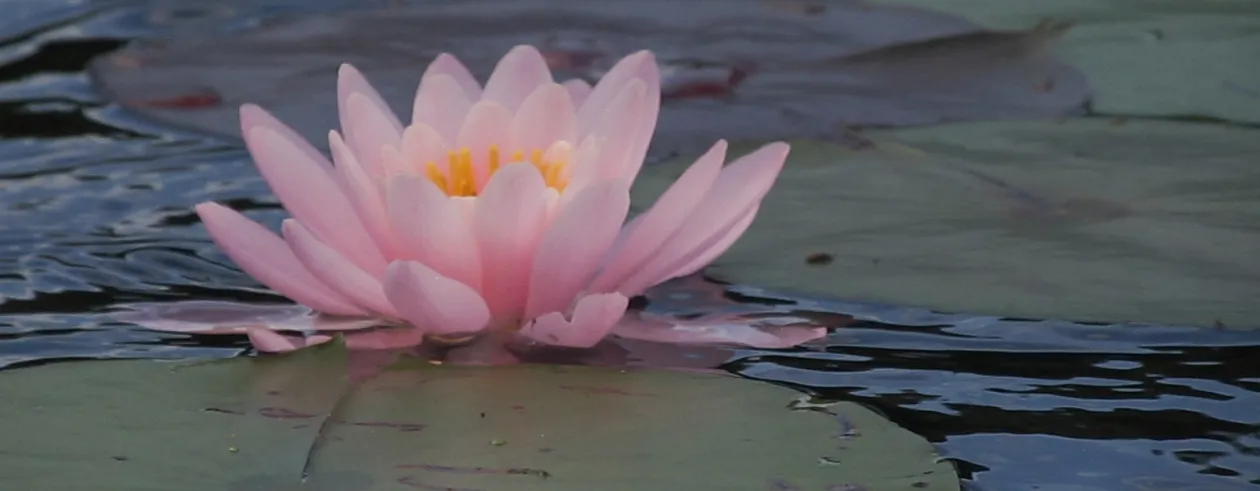
Not gold or silver!
Who wants to find treasures?
Don’t expect to get your pockets full, but do expect to lay your eyes upon some of the natural beauties that grow in the Adirondacks when you are out for a paddle or a walk along the shoreline.
Of course I enjoy paddling with others, but when I do a solo outing I meditate, make plans, and take better photos as I don’t feel rushed. I often paddle close to the shoreline to view some beautiful treasures. I am never bored; my last outing lasted five hours and I enjoyed every minute!
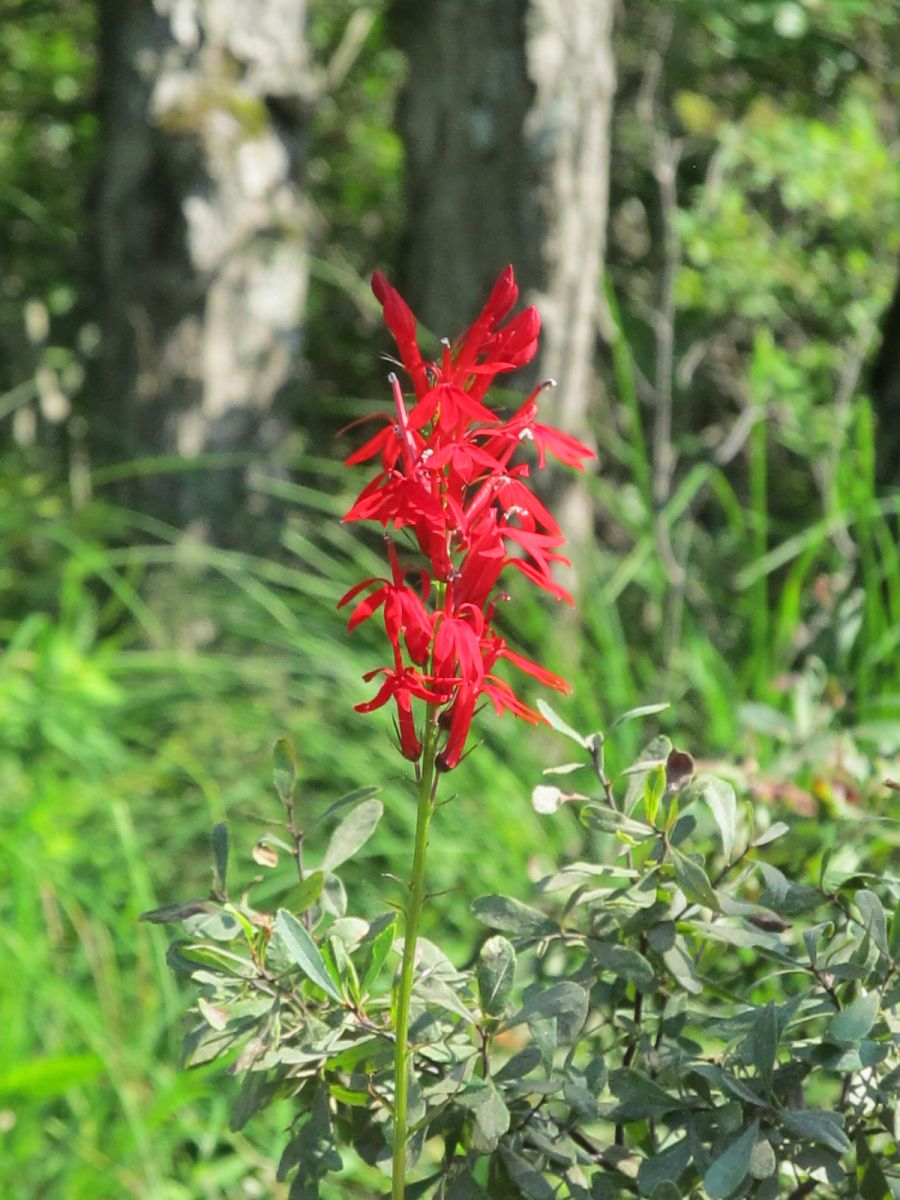
Rich is color!
One of my favorite flowers is the cardinal flower (Lobelia cardinalis), due to its brilliant scarlet red color you are able to easily spot it along the shorelines, it grows up to 28 inches tall. If you are out hiking you can also see this red beauty along the trails. They are long tubular flowers, a favorite of the ruby-throated hummingbird. You can grow them in your garden, but I understand they are hard to winter; however, I plan on giving it a try next year.
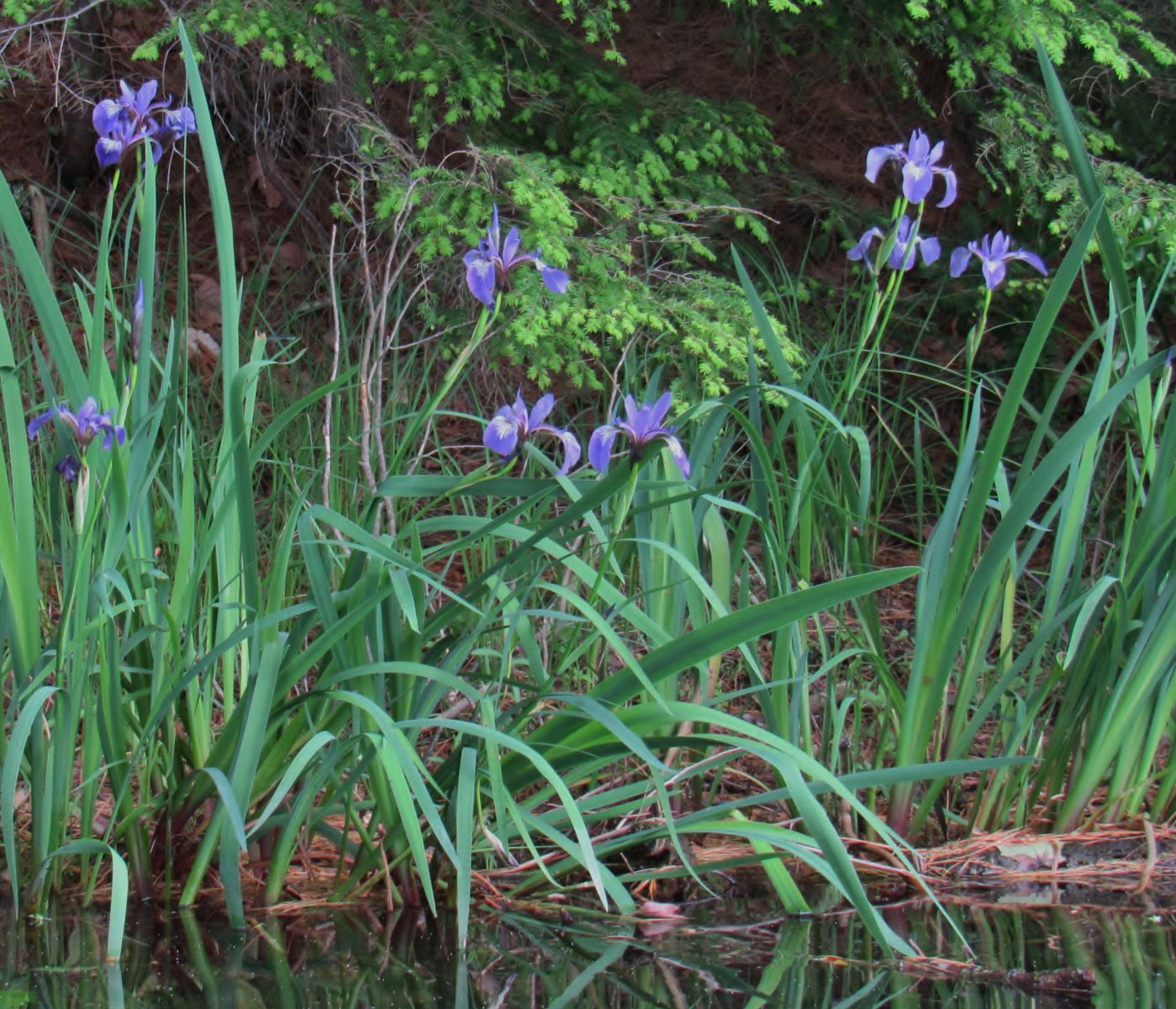
A beauty!
The blue flag iris is another favorite — I spotted many of these on a late June paddle. There were many single plants and little bunches along the shoreline, when I spotted this cluster of eight, I felt very lucky! I took a distance shot to capture all of them and a very nice close up. The plant ranges from 2- to 3-feet tall and has long, narrow leaves. I have seen these on many Adirondack lakes and ponds.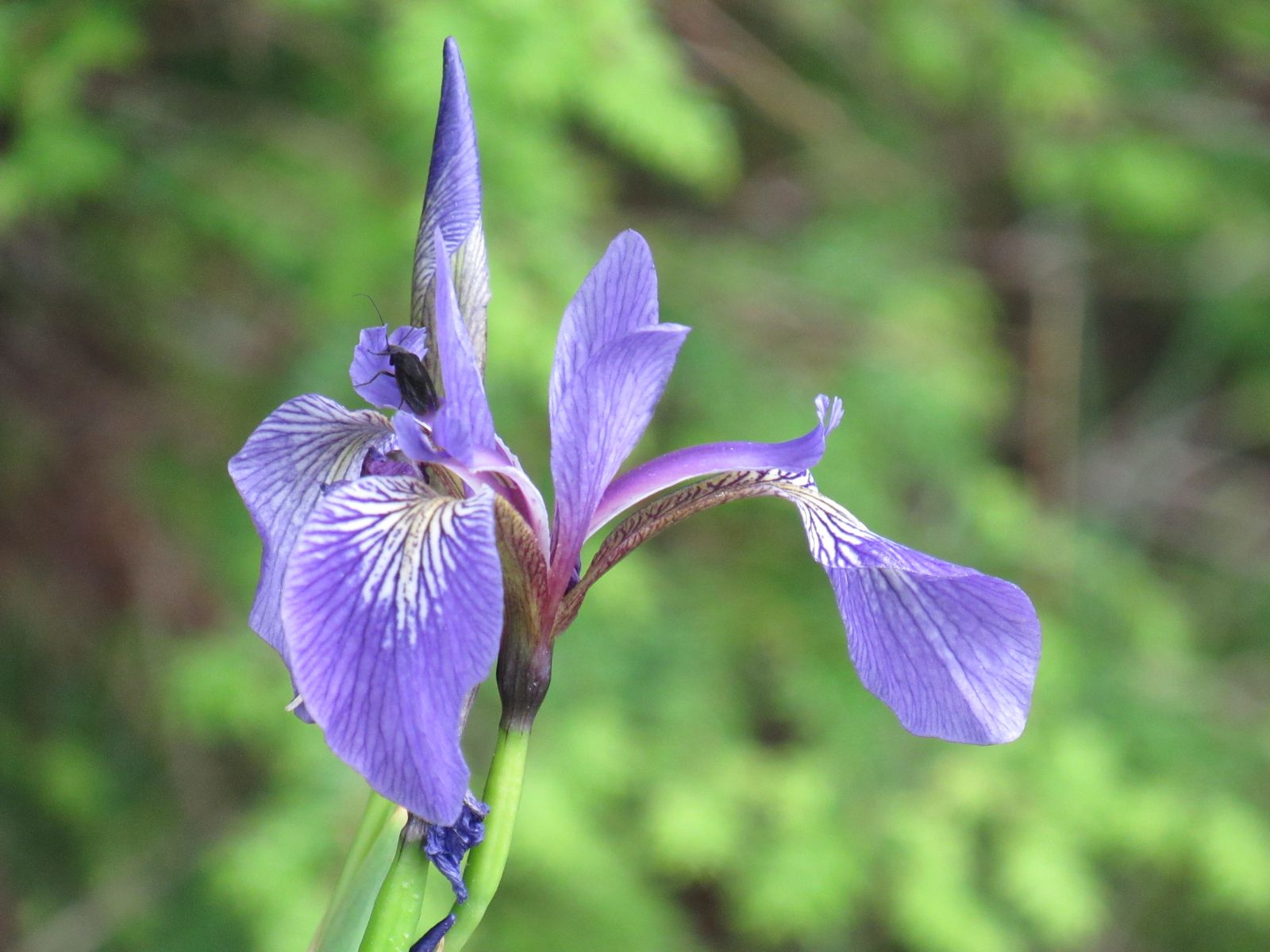
Not so easy to find!
Spotted touch-me-nots are orange flowers that can be seen in July and August hanging from their stalks. They grow up to 5 feet tall. This Adirondack wildflower grows in moist wet areas in the woods, swamps, and beaver marches. I have not seen many of these flowers — this photo was taken on the Kunjamuk, Miami, or Jessup River, all which have numerous beaver dams!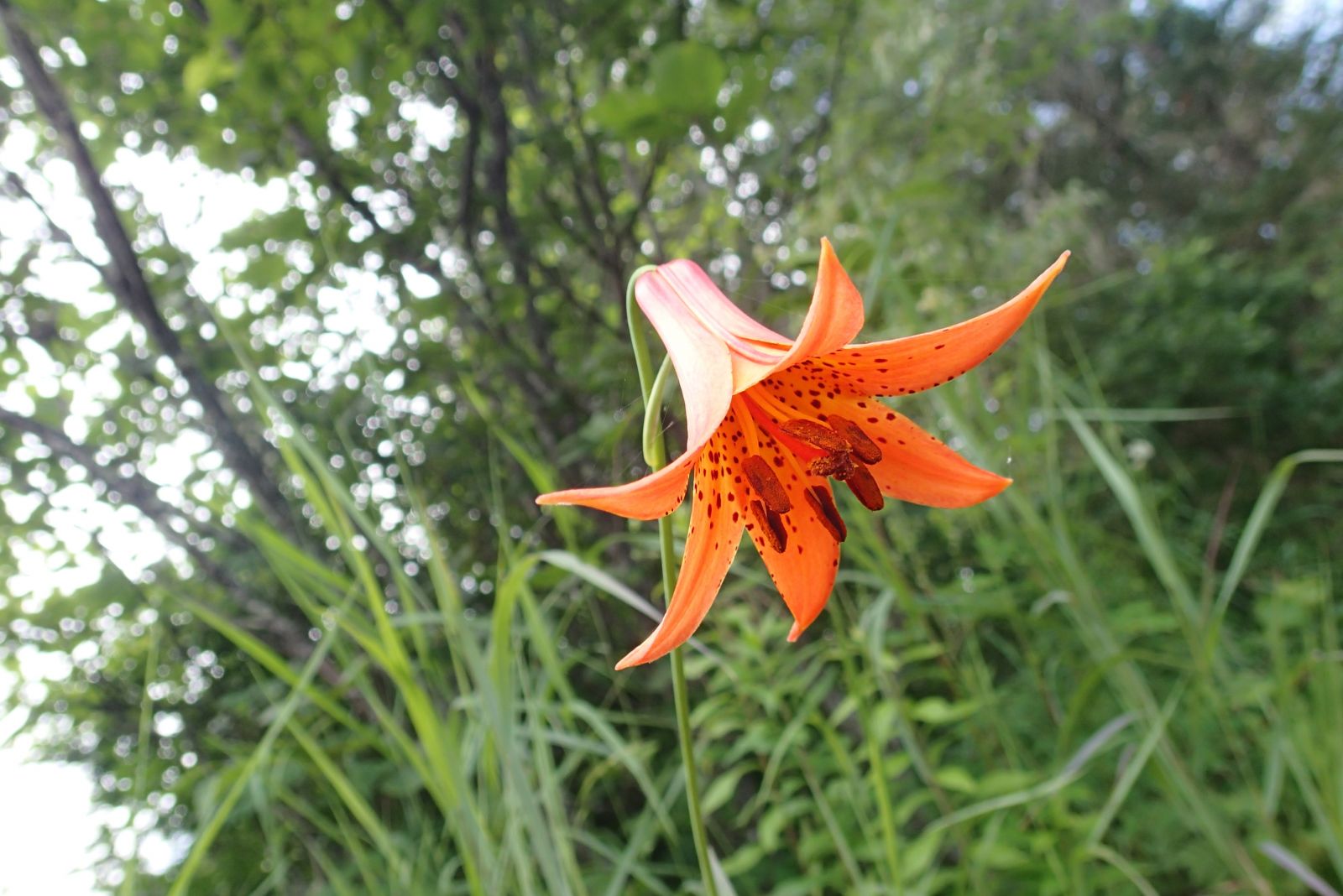
Flesh eating?
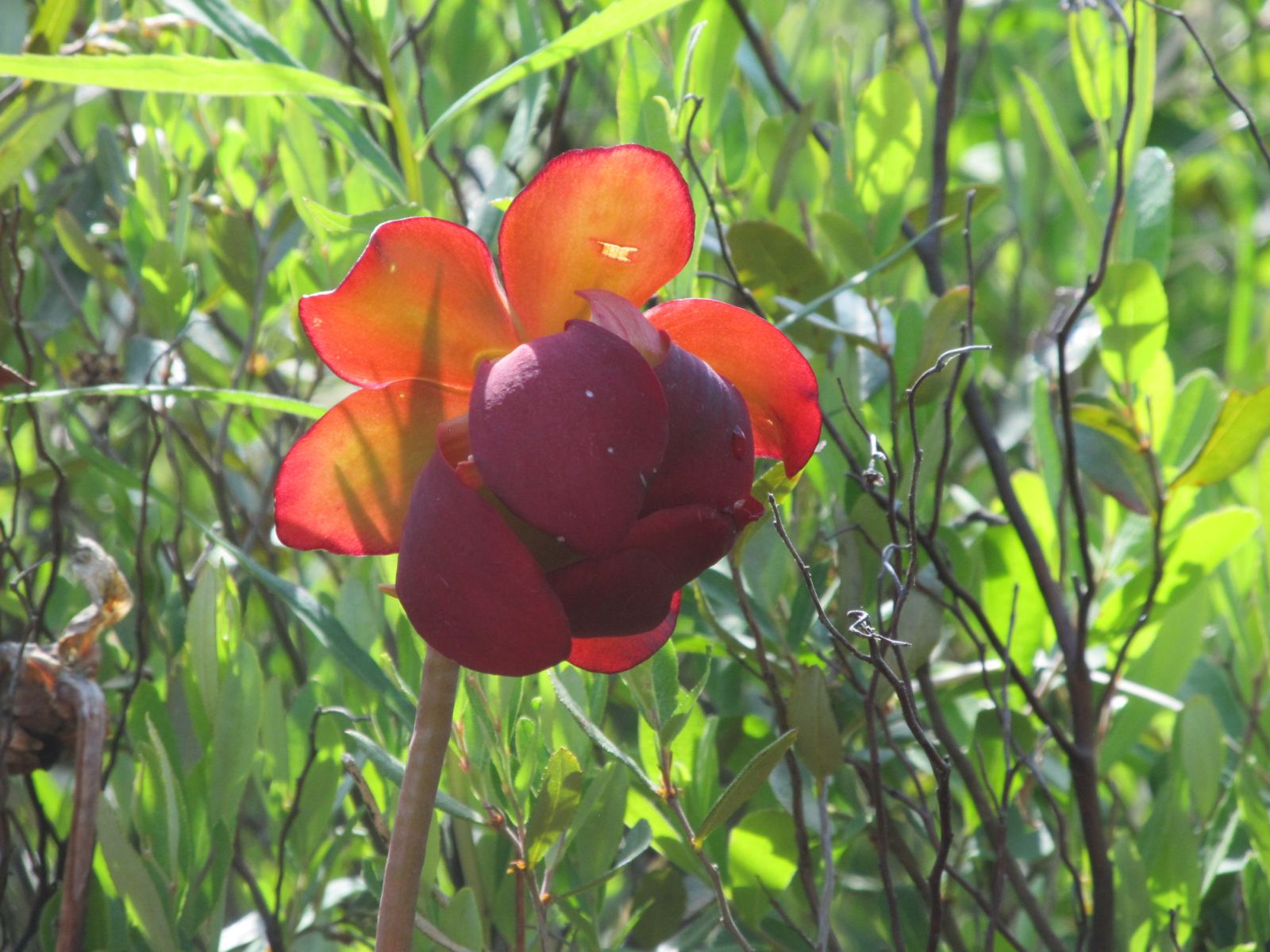
The pitcher plant is carnivorous, it eats insects that enter the mouth of the plant and become trapped by the downward-pointing hairs. The dark red flower grows on leafless stalks up to 2 feet tall and are found in peat bogs. The flowers can be seen in late spring and early summer, I took this photo while paddling on Nick's Lake. In researching this plant I learned that pitcher plants were used by Native Americans to treat lower back pain, fever, chills, whooping cough, pneumonia, smallpox, and kidney problems.
Another carnivore
The sundew is another carnivorous plant that grows in bogs, swamps, and marshes. If you paddle to Lows Lake you will come across these on the Bog River — on the bogs, of course! Roundleaf sundews have drops of moisture on their leaves where small organisms stick.
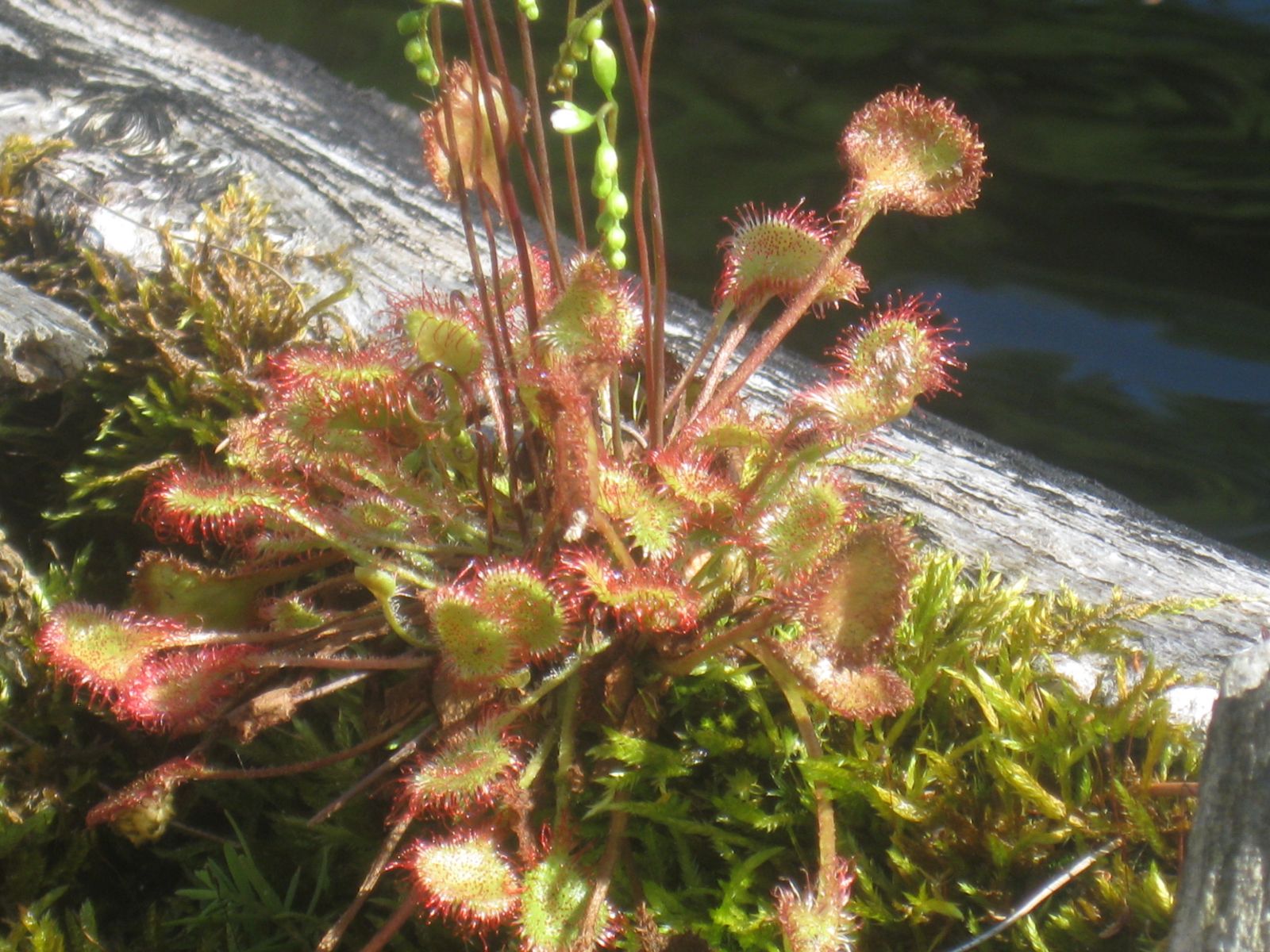
Pickerelweed is found in abundance!
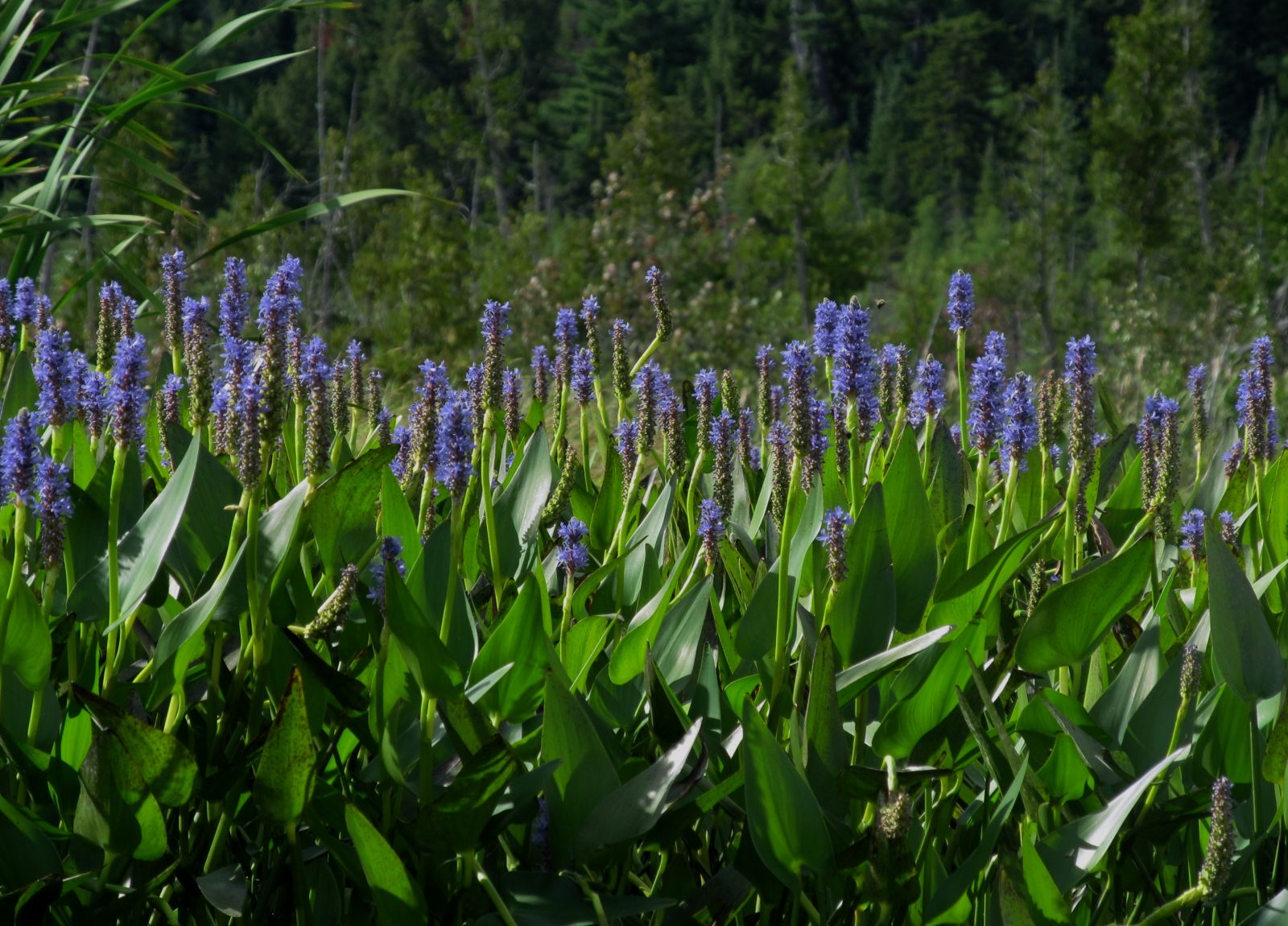
I believe most everyone has seen pickerelweed, a spiked plant that flourishes in the shallow borders of ponds and streams and can reach up to 4 feet tall. These purple flowers are easy to spot when driving by shallow waterways. Reportedly the young leaf stalks are edible and can be used in salads. They were also used by some Native Americans as a contraceptive!
Tissues?
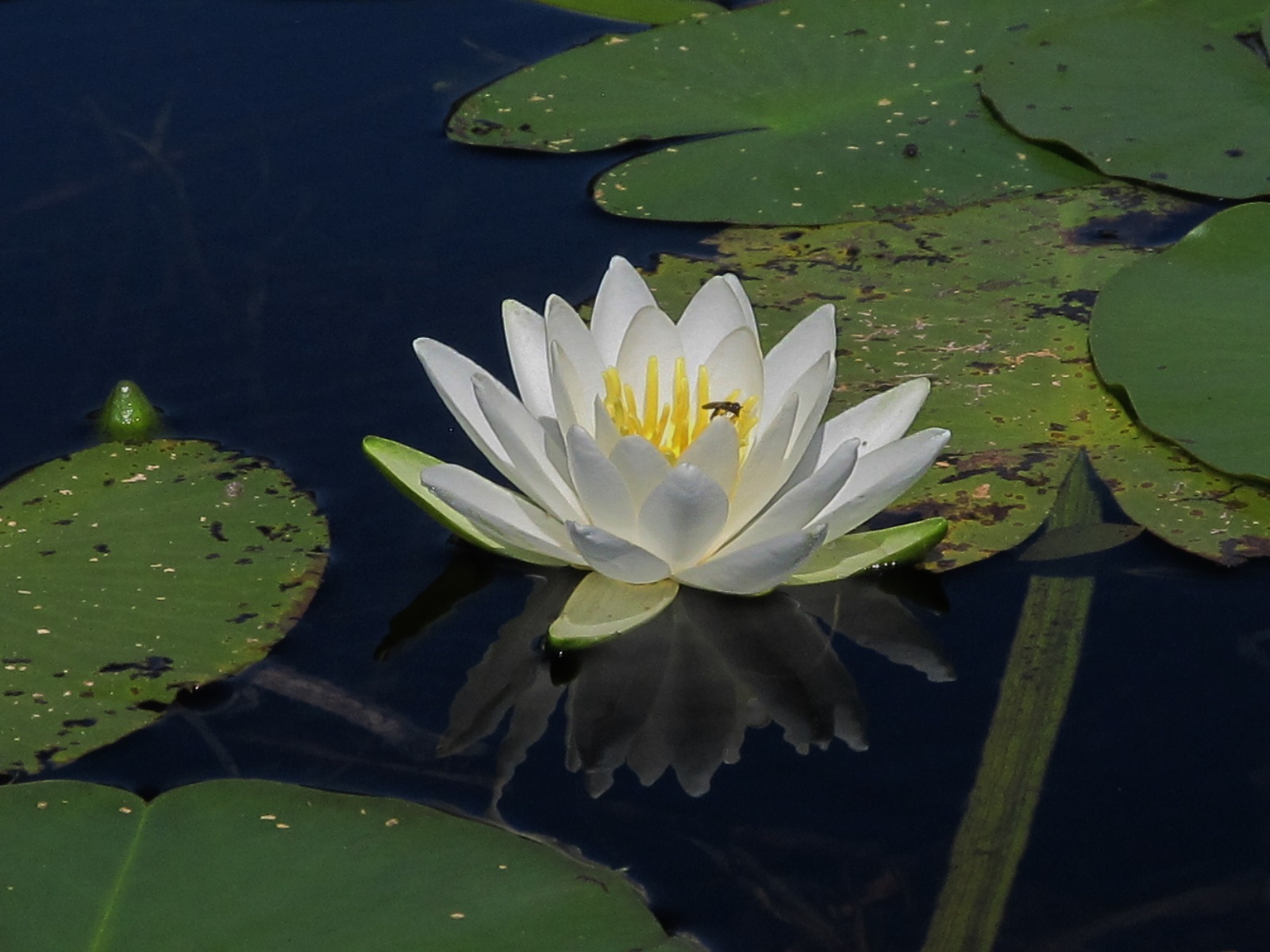
There are plenty of white water lilies as well as yellow water lilies in the Adirondacks. In fact, in some areas the white flowers are so plentiful they appear to be floating tissues from a distance. Interestingly, the white water lily is another plant that has been used for ailments, including colds, tuberculosis, bronchial issues, toothaches, and mouth sores. There are also pink water lilies, as seen in my cover photo; however, I have only seen a handful of pink water lilies on Hoel Pond. I don't believe they are a typical aquatic plant of the Adirondacks.
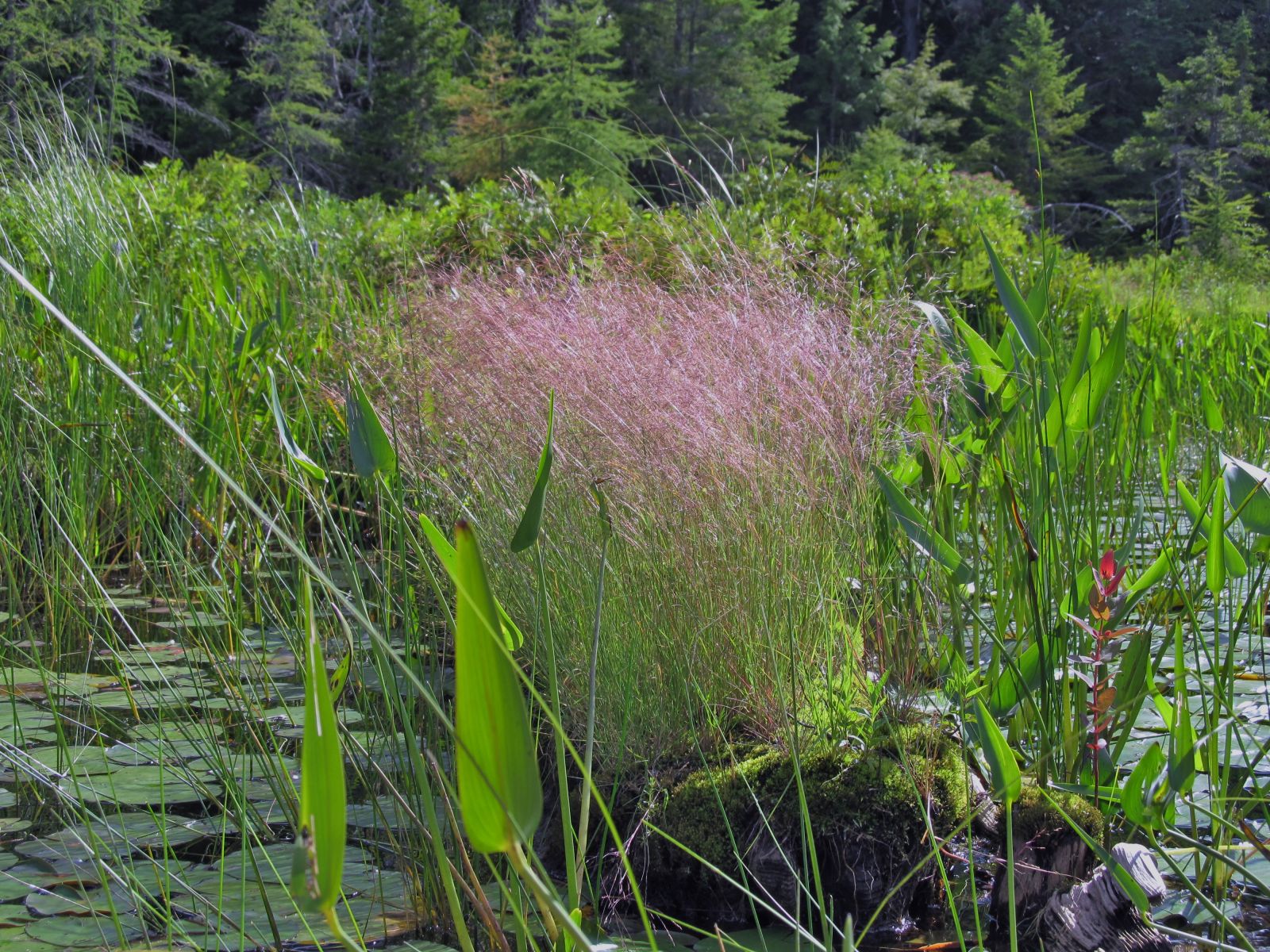
A little help, please
A few years ago I took this shot of pink grass. I believe it was between Fish Creek and Floodwood Pond. I recall finding it once on the internet, but I didn't record the name or any information about it and my search on this day has been unsuccessful — perhaps someone can assist me!
These are only a few of the treasures you will find on along the shorelines. How about getting out there? The Tupper Lake region is a great place to acquaint yourself with the Adirondack foliage and wildlife.
This week in related ADK news:
